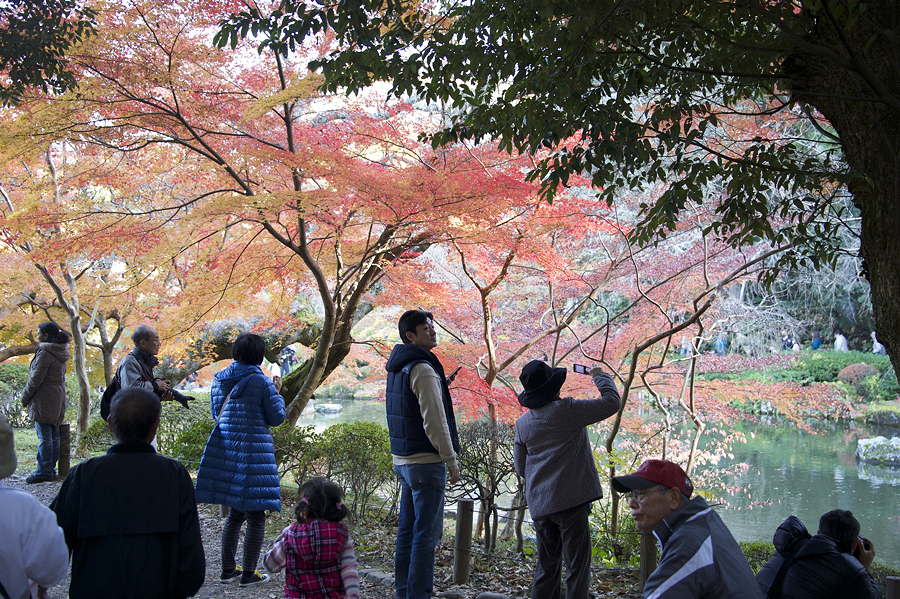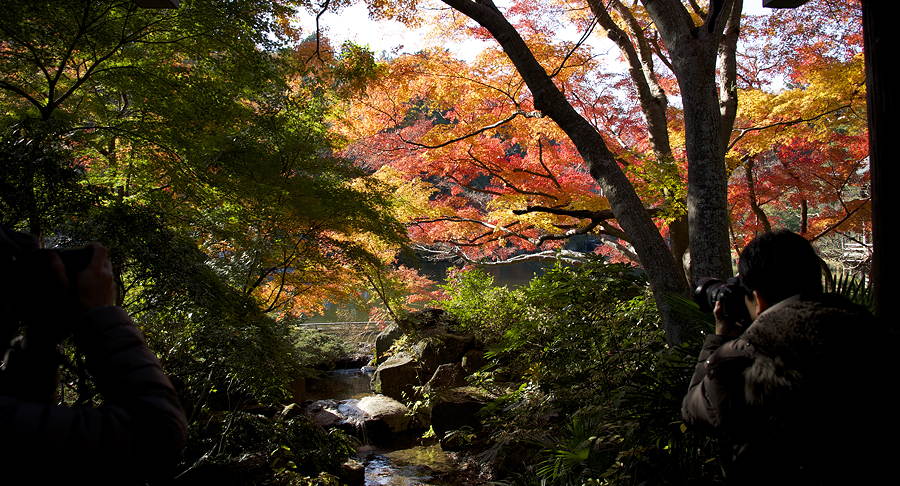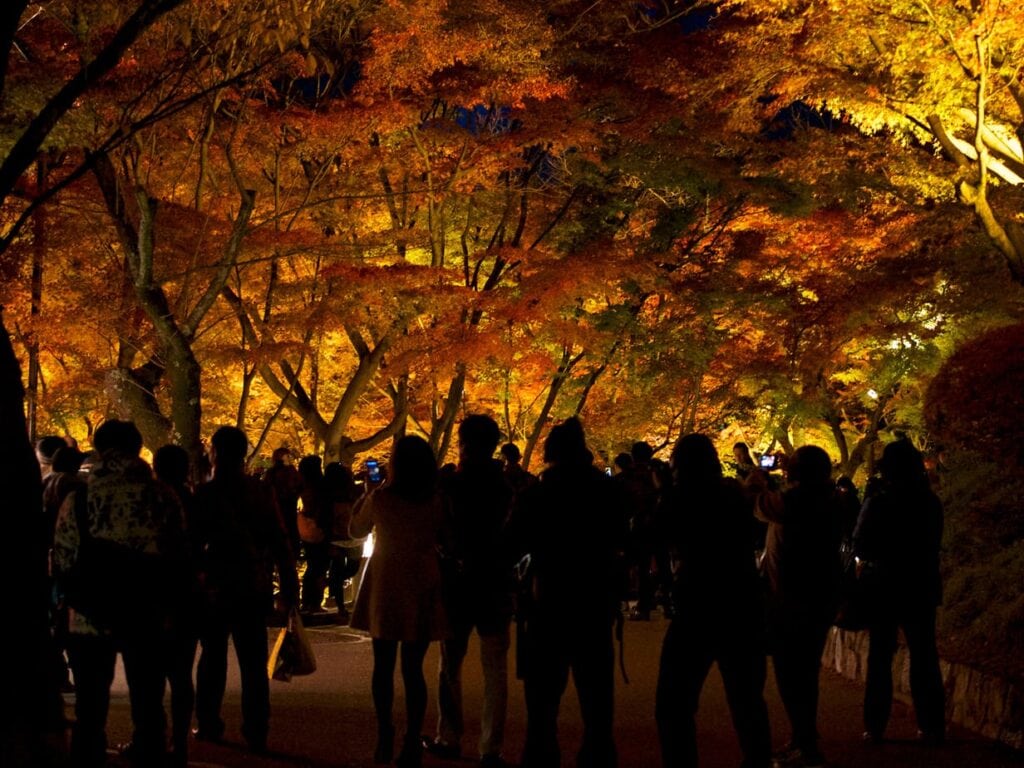ABOUT THE SEASONS IN JAPAN
In addition to the globally known seasons of spring, summer, autumn and winter, there are additional "seasons" in Japan such as Hanami (cherry blossom time) and just Momijigariwhen the leaves slowly turn the most beautiful shades of red and ginkgo trees (公孫樹) shine in bright yellow.
Originally from the north (Hokkaido), since the Heian period, the entire country has enjoyed this special time. How significant these special times are can also be seen from the fact that there are Kigo (季語, "season words") exist in Japanese, words or phrases that are associated with very specific seasons in Japan.
Sometimes it is quite obvious, but often it is very subtle. That Momiji stands for autumn is obvious, but why does the moon (月) also belong to the "autumn words"? Now the nights become longer again, often they are cloudless and so one can look at the moon particularly well in this time. Thus, despite hypermodern, overburdened cities and ubiquitous high-tech in Japan, something like a deep connection to nature of the Japanese - and a romantic sentimentality - can be seen in the Japanese language.
Can you imagine that the daily weather report in Germany will be extended to include information about the parts of the country where the trees are in bloom or where the fall colors are beginning to appear?
In Japan, this is the case and is followed with great interest.
Und natürlich sind da noch die kulinarischen Höhepunkte dieser Saison. Nur jetzt gibt es Dobin Mushi (土瓶蒸し), bei dem eine besonders feine Dashi mit einem der raren Matsutake (松茸, Eichenpilz) in einem kleinen Gefäß, das einer winzigen Teekanne ähnelt, serviert wird.[/vc_column_text][vc_column_text]Nur jetzt findet man erntefrische Yuzu ( 柚子), diese ganz besondere Zitrusfrucht Japans und Ginnan (銀杏, Ginkgo-Nuss, eigentlich der Samen des Ginkgobaums). Außerdem findet man nur jetzt überall kleine Stände mit duftenden, frisch gerösteten Kastanien. Japan ist einfach ein gastronomisches Paradies, was sich viele unserer Kunden in München oft nicht vorstellen können – wir hoffen, irgendwann mal mehr Vielfalt anbieten zu können, was aber schwierig ist, solange die meisten deutschen Gäste immer nur das essen wollen, was sie schon kennen… 😉
During this time, Japanese people hike in the parks by the thousands or go to the countryside to enjoy the magnificent sight of nature.
THE AUTUMN TEMPLE COMPLEXES ARE THE ATTRACTION FOR MANY JAPANESE PEOPLE
Like here in Narita-San, a temple outside Tokyo near Narita airport. For Western observers, it is always surprising how hundreds and thousands of young people look at temples as a pastime ...

Or in Kyoto - where young couples or cliques of friends set out in the evening to admire the magnificent maple trees of the famous Kiyozumidera temple complex, brightly lit in autumn. The atmosphere on the streets is peaceful and relaxed, with all sorts of delicatessen and souvenir stores open into the evening hours, lining the street up to the temple.

In recent years we have invested a lot of love and passion in furnishing the terrace of sansaro in the middle of the Amalienpassage with beautiful, different and exotic Japanese maples. In the Adalberthof, which is the name of the middle courtyard of the Amalienpassage in Maxvorstadt, where the sansaro restaurant is located, you will find a wide variety of maples: standards such as Bloodgood, Red Flash or Fireglow, a beautiful Ozakazuki, whose coloration is particularly impressive in spring and autumn and which otherwise seems inconspicuously green, rare varieties such as StarFish, Katsura, Bi-Ho and Kotohime - a comprehensive, colorful collection of the noble plants has come together. Unfortunately, we at SUSHIYA cannot influence the weather. But even if the weather here in Germany seems to be too fresh in autumn to sit outside: come by the Amalienpassage and enjoy the sight and the play of colors that is happening now. And of course there is nothing better than sitting on the Japanese tatami in our restaurant and watching the play of colors and the transience of being alone through the large windows. Typically Japanese: sentimentally marveling at life and its beauty 😉






